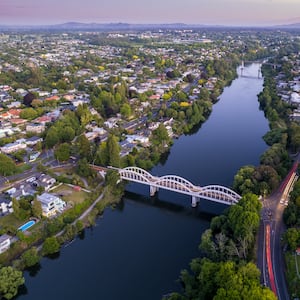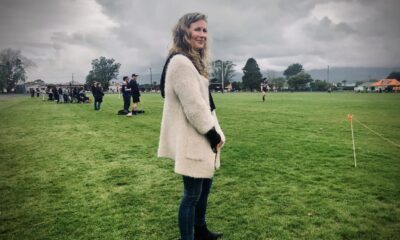Business
Weather Report Controversy: RNZ Faces Scrutiny from Watchdogs

An article about Hamilton’s weather from RNZ has sparked controversy, leading to investigations by both the Broadcasting Standards Authority and the Media Council. The piece, which focused on a series of hot days in the region, caught the attention of investigative journalist Ian Wishart, who raised concerns over its framing and reporting on the program Morning Report and the RNZ website.
Following his complaints, both watchdogs examined the story and provided differing outcomes regarding its adherence to media standards. This situation highlights the complexities involved in journalistic integrity and the varying interpretations of reporting standards.
Details of the Investigation
Ian Wishart, known for his work in investigative journalism and authorship, took issue with how RNZ presented the weather conditions in Hamilton. He argued that the coverage did not accurately reflect the reality of the situation, potentially misleading the public. His complaints prompted scrutiny from both the Broadcasting Standards Authority and the Media Council, which serve as oversight bodies for media practices in New Zealand.
The Broadcasting Standards Authority reviewed the matter first, considering whether RNZ had breached any broadcasting standards. Their findings indicated that while the story had elements that could be interpreted as biased, it ultimately did not violate any specific guidelines. This decision underscored the challenges in balancing factual reporting with engaging storytelling, especially in a climate-sensitive context.
In contrast, the Media Council reached a different conclusion. After evaluating the same story, they found merit in Wishart’s criticism. The council determined that RNZ had indeed failed to present a balanced view of the weather conditions, thereby breaching principles of fairness and accuracy in journalism.
Implications for Media Practices
The contrasting outcomes from the two watchdogs raise important questions about media accountability and the standards to which news organizations are held. While one authority exonerated RNZ, the other pointed out significant flaws in the reporting. This discrepancy reflects the subjective nature of media interpretation and the potential consequences for public trust.
In an age where information is disseminated rapidly, the need for precise and responsible journalism has never been greater. Both the Broadcasting Standards Authority and the Media Council play vital roles in ensuring that news organizations maintain high standards. The case involving RNZ serves as a reminder of the ongoing responsibility that journalists have to their audiences.
As media continues to evolve, incidents like this one may prompt further discussions about how stories are framed and reported. For journalists, the challenge will be to provide accurate information while engaging the public in meaningful ways.
In conclusion, the Hamilton weather story has not only stirred debate about RNZ’s reporting but also highlighted the critical role of media watchdogs in upholding journalistic standards. As the landscape of news continues to change, maintaining public trust will remain a fundamental goal for all media outlets.
-

 Sports1 month ago
Sports1 month agoNetball New Zealand Stands Down Dame Noeline Taurua for Series
-

 Entertainment1 month ago
Entertainment1 month agoTributes Pour In for Lachlan Rofe, Reality Star, Dead at 47
-

 Sports1 month ago
Sports1 month agoSilver Ferns Legend Laura Langman Criticizes Team’s Attitude
-

 Entertainment1 week ago
Entertainment1 week agoNew ‘Maverick’ Chaser Joins Beat the Chasers Season Finale
-

 Entertainment2 months ago
Entertainment2 months agoKhloe Kardashian Embraces Innovative Stem Cell Therapy in Mexico
-

 Sports2 months ago
Sports2 months agoGaël Monfils Set to Defend ASB Classic Title in January 2026
-

 World3 months ago
World3 months agoPolice Arrest Multiple Individuals During Funeral for Zain Taikato-Fox
-

 Politics2 weeks ago
Politics2 weeks agoNetball NZ Calls for Respect Amid Dame Taurua’s Standoff
-

 Entertainment3 weeks ago
Entertainment3 weeks agoTyson Fury’s Daughter Venezuela Gets Engaged at Birthday Bash
-

 Sports3 weeks ago
Sports3 weeks agoHeather McMahan Steps Down as Ryder Cup Host After Controversy
-

 Entertainment3 weeks ago
Entertainment3 weeks agoTyson Fury’s Daughter Venezuela Gets Engaged at Birthday Bash
-

 World2 weeks ago
World2 weeks agoNew Zealand Firefighters Plan Strike on October 17 Over Pay Disputes



















